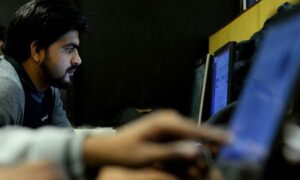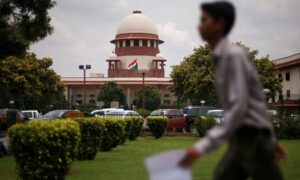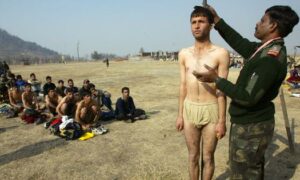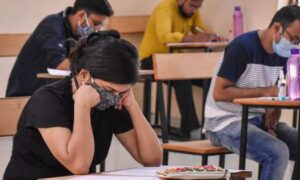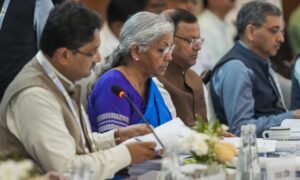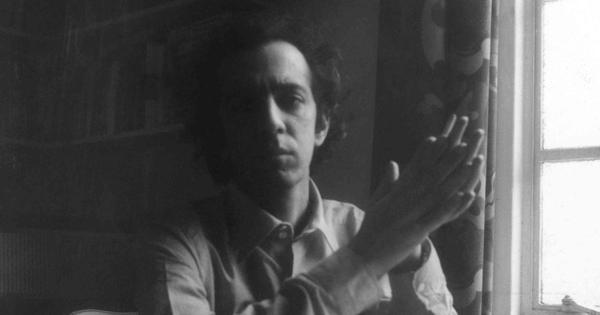
The late 1960s and the early 1970s were a time of anthologies. Some anthologies appeared as part of a series, and most were introducing the Anglophone reader to the “new”. This might have meant a dead poet who had been, till then, unavailable in English, or a living poet whose work was deemed to be of importance. The dead and living were joined in these publications through the immediacy of that wayward period we were still living through: the 20th century. We knew the 20th century was an extraordinary time not only for its incredible “progress”, the leaps it had made, but also for its tragedies, disruptions and cultural freedoms and enthusiasms: it’s almost as if we weren’t inhabiting it but spectating on it. Our everyday life was banal; but our period was surely unusual in a way that exceeded what our fathers in their jobs could comprehend. For this reason – the innate superiority of the here and now – the old encyclopaedic selections of revered passages, the Golden Treasuries, became redundant. It was, instead, a radical strangeness we were being offered, the quality that Pound must have had in mind – and not just recentness – when advocating the “new”; and, before him, Tagore, with naba, a self-replenishing, revolutionary creative resource. This strangeness we tasted in the 1970s with, for instance, A Alvarez’s Penguin Modern European Poets, where we encountered figures once obscure even in their own cultures, like Pessoa and Vallejo, and poets no one who was acquainting themselves with modernity could ignore, like Rilke and Apollinaire. Some of these, like Rilke, had already made their way into Indian languages like Bengali; but for the Anglophone reader, or writer (many readers of anthologies were writers, or wanted to be, and wanted to be in anthologies themselves), these works were unprecedented.
The seeker of these anthologies could go, in Bombay, to one of three places, none too far from the other: Strand Book Stall off DN Road; Thacker’s at Kala Ghoda; and Nalanda Bookshop at the Taj Mahal Hotel. It was the last at which I picked up Pessoa, Vallejo, Tranströmer, Rilke, Mandelstam and other poets in Alvarez’s series, Hugh Kenner’s A Reader’s Guide to Samuel Beckett, the Bhagavad Gita and the Upanishads, and Jussawalla’s anthology. This would be around 1978 and 1979, when I was 16 or 17.
It was, of course, the age of the bipolar world – defined in the West by what had been termed the Cold War by Churchill – and India was an India of socialism with a tariff-protected economy and state-sponsored boredom where culture was concerned. There was a definitive middle-class recalcitrance, of course: it was universally assumed that writing and art that were popular weren’t worth pursuing, and that the very rich were essentially traders and had no interest in literature. It was in that standoffish, compromised, but in some ways ingenuous civility that Nalanda was located. Unlike the entrances of the Taj today, barricaded against terrorists, there was free passage for the bohemians and poets from Colaba and further afield who made their way to the bookshop.
Jussawalla was 34 years old when his anthology appeared, and two years away from publishing his first mature collection of poems, Missing Person, which would make his name in the fragile ecosystem of English-language poetry in India. English was still seen as a colonial and foreign – and, therefore, a minor – language as far as Indian writers were concerned. The era of the postcolonial (although Said’s Orientalism was published only four years after the anthology) was still more than a decade from arriving: it still needed its Midnight’s Children, but, most emphatically, it needed the end of the Cold War and the era of deregulation and globalisation to set in for it to fetishise English as the tongue of the coloniser, a tongue that needed to be wrested back by the colonised: a subtle reformulation of, and distraction from, the fact that, by the late 1980s, it would become the language of a new globalised elite. When Jussawalla’s anthology appeared, among the “major” languages were – to name some at random – the English of England and America, French, German (the West European languages), putatively minor East European languages like Czech and Polish that produced “major” poetic works and literary figures that came out of significant political realities (related to the Cold War), and Urdu, Bengali, Marathi and other Indian languages in India which supposedly captured authentically, like their counterparts elsewhere, the risks and intellectual idiosyncrasies that art and life in the twentieth century involved.
English literary practice in India was seen to be too artificial and remote to participate in this 20th-century experience. The literatures in the Indian languages weren’t important for being a home to the national but because – among other things – they were where a contemporary internationalism resided, a global conversation that didn’t depend on overt national alliances but a counter-cultural mood. English in England wasn’t seen to be sufficiently part of this experimental and open-ended exchange; it was too much of a benchmark, as far as the Indian writer was concerned, for normality and conventional realism.
Jussawalla makes this important observation about the authors he includes: that they’re in dialogue with Europe because of the artistic and intellectual limitations of the British legacy, and not simply because the latter is inextricable from the memory of Empire. If you think of Jussawalla’s contemporaries and friends writing poetry in English, American English is creatively important for the same reason. All this – the move away from Britain not just towards the indigenous but towards the international, which is another word for a provisionality and flux in thought that could never be safely represented by a national flag – is part of the “new” in the anthology’s title. It’s an Indian anthology which is not interested in figuring out how to represent India. It doesn’t want to either address, embody, transcend or set aside the “idea of India” (a phrase still to come into circulation). It wants to capture the conversations that literary practice must have in order to survive.
Not only does Jussawalla make no attempt to encompass everything, the remit of the anthology gives him permission to leave out the burdensome India of antiquity that looms largest, paradoxically, in the English language. He begins in medias res, putting to one side both the moderns who made possible, and constitute, a 19th-century shift (Tagore, Premchand), as well as older contemporaries who made viable creative forms out of English (RK Narayan, Raja Rao).
His anthology is an anthology of restive legatees – those who find themselves negotiating a dubious inheritance: a free country of flawed politics; a hopeful but occasionally self-defeating socialism; an almost incongruous, but oddly powerful, commitment to imaginative and aesthetic exploration, or what Jussawalla calls “style and form”:
…the Western reader will be surprised that most Indian writers still do not propose any kind of social or political commitment, or advocate action that might effectively transform a system which continues to let poverty or its associate evils persist; they are concerned with style and form. The Western reader is bound to be shocked, not because they dance on the rubble of a disaster area but that they should be so self-conscious about being seen to dance well. The self-conscious style of some of the pieces is not the creation of translators. It is there in the originals.
About contemporaries whose writing is overtly ‘committed’, Jussawalla remarks, penetratingly: ‘I have found the content of their work romantic rather than Marxist.’ This anthology, then, is his immediate milieu: a dance on the rubble where the dancers are ‘self-conscious about being seen to dance well’. Jussawalla is drawn to this performance for its buoyancy. The exuberance of the milieu informs his biographical notes, which, instead of containing essential successes, record artistic lineages, disillusionments, illnesses, temporary employment and the peculiarities of writerly temperament: here is a shadow-crowd of seekers, by turn loquacious and tongue-tied, like the one in Doodhnath Singh’s story. They’re on an impossible intellectual quest, in the rubble of post-Independence India, of recuperation:
… We can’t grow old without a history. We have to prove that our venture was no fabrication. But, the way I see it, we have to be careful about one thing: for our rituals we need some distinguished corpse.’
“All corpses are alike,” said someone.
“I meant the corpse of a great man.”
“But it’s not part of our tradition to preserve the corpses of great men.”
When the leader heard this he sat down helplessly, holding his head in his hands.
“Can’t we make do with the corpse of a great man’s ideas?”
“Where shall we get such a corpse?” asked the astonished leader.
“We’ll look for it everywhere.”
For the poet Buddhadeva Bose, the Sanskrit literary corpus was a corpse for the Bengali writer to circle around and then back away from. An anthology can be both corpus and corpse: Jussawalla’s writers ensure his is a living thing through an animatedness that’s at once energising and despairing. There’s no edifice, tradition or “great man” they can refer to; instead, they are often witness to, as Jussawalla observes, dismemberments, body parts that are at once liberating, horrifying and comic – like the ones in Goya – because they don’t add up to anything. The representational is torn apart with a kind of violence. In the Tamil poet N Pichamurti’s “National Bird”, some people “plucked the tail / with its thousand eyes”, “Others pulled the tongue out / … And still others, ‘The peacock’s neck is ours,’ / broke it and hurried off.” This is desecration; it is murder; but the poem is strangely alive. Jussawalla holds his head in his hands but then embarks irresistibly on an investigation with his crew – his writers and translators.
Among them, the oldest was Pichamurti, born in 1900; one contributor, the Hindi poet Muktibodh, was dead; the youngest – both contributor and translator (of poems and stories, including Singh’s, quoted from above) – was Arvind Krishna Mehrotra, born in the year of Independence. There’s no consciousness here that sprang to life prior to the inception of the twentieth century or after 1947. At the time of the publication of New Writing in India, anthologies were not primarily showcases; they contained the imprint of the various ways in which this playful enterprise – literature – continued to be at work in different locations during an intractable epoch. Besides being intended for readerships or even a market, anthologies were meant to speak to each other.
What does Jussawalla’s anthology bring to that exchange? India, at this time (as Nissim Ezekiel’s essay on Naipaul’s “An Area of Darkness” reminds us), is conflated in the larger world with two things: the extremity of poverty and the grandeur of a spiritual and civilisational past. For Jussawalla, these categories are of little use. His anthology extends the conversation by being true to what’s in process and is resistant: it tries to make sense of what an inheritance comprises when there’s such a keen sense of disinheritance, of what kind of imaginative liveliness arises from a period of uncertainty. The excellence of the selection is almost an inadvertent but inevitable offshoot of what the book is preoccupied with: making sense of the inchoate. We find ourselves in the company of a bunch of ill-fitting visionaries and in the presence, again and again, of an unforgiving intelligence: here are incomparable writers and translators who found themselves enmeshed in a quest that is still mesmerising.
Excerpted with permission from the Introduction by Amit Chaudhuri in New Writing in India, edited by Adil Jussawalla, Penguin India.
This article first appeared on Scroll.in
📰 Crime Today News is proudly sponsored by DRYFRUIT & CO – A Brand by eFabby Global LLC
Design & Developed by Yes Mom Hosting

